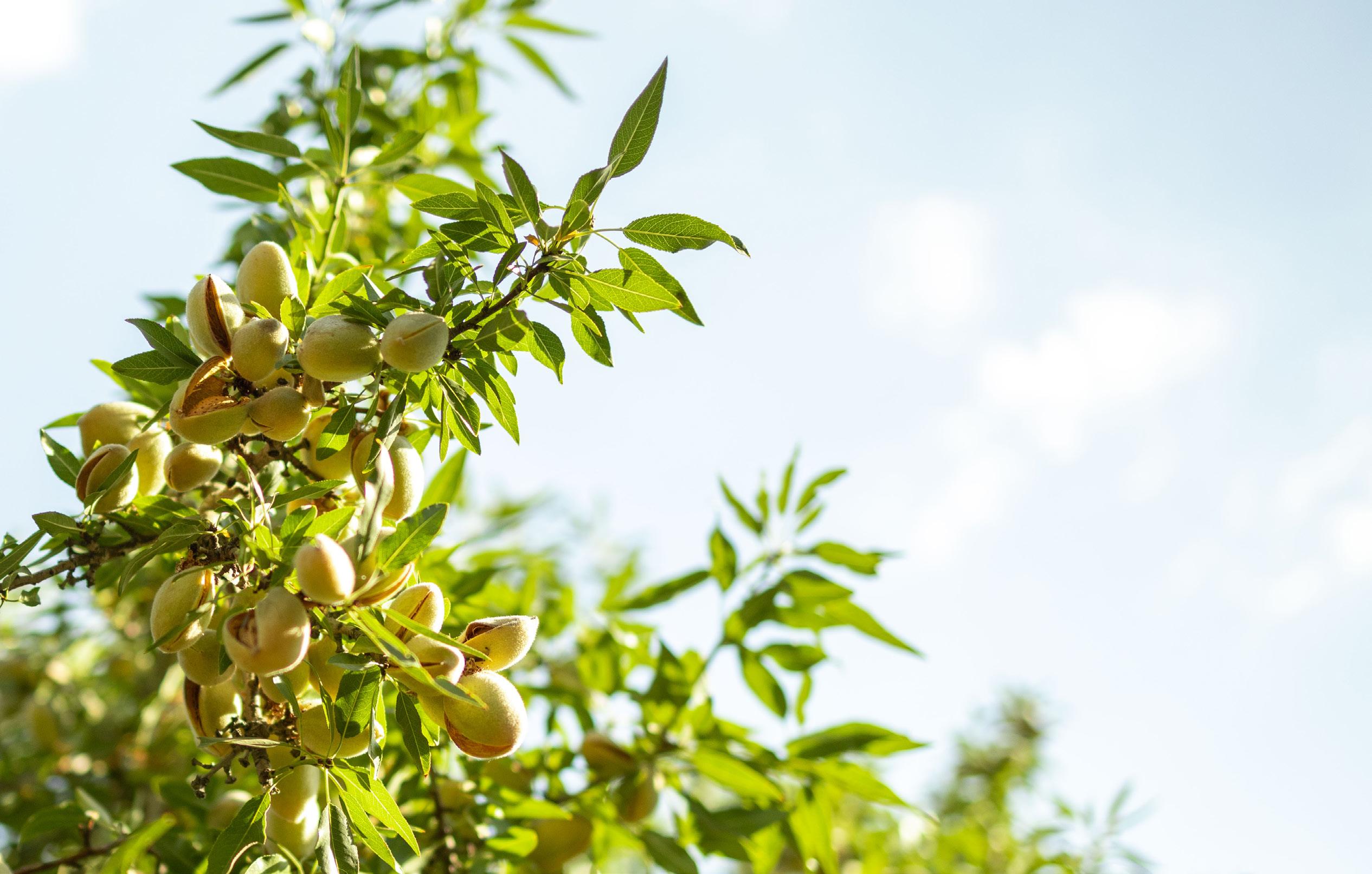
4 minute read
Good Ground: A Nut Case
A NUT CASE
A Look At Tulare County's Important Nut Industry
Words by Dave Bazar
Here in our community, nuts are a big deal. More specifically, the growing of almonds, pistachios, walnuts, and pecans.
According to the Office of the Tulare County Ag Commissioner, these nuts made up about 12% of Tulare County’s total agricultural production of $7.9 billion in 2023. Although pecan production in Tulare County is small, the production of the other three is significant on the state, national, and global stages. On the state level, Tulare County ranks fourth in acreage for both pistachios and walnuts and sixth for almonds. California produces at least 99% of these three nuts nationally. Globally, almost half of the world’s trade of walnuts and pistachios and an amazing three-quarters of the world’s almond production come from our state. So, let’s learn a little bit more about these three nuts our neighbors are growing.
All three crops originated in Asia. Walnuts and pistachios came from Persia and almonds are thought to have originated somewhere in western China. Historically, these are ancient foods, with evidence showing that our ancestors consumed them as far back as 4000 to 7000 BC. Over time, they were cultivated and made their way down the Silk Road to the Mediterranean. From there, in the case of almonds and walnuts, Spanish missionaries introduced them to California. Pistachios arrived much later, with the first commercial harvest in California not occurring until 1976.
Horticulturally, all three crops use roughly four acre-feet of water per year. They are relatively water-hungry—more so than wine grapes or citrus. All three are grown on special rootstocks that provide quality, yield, and disease-resistant attributes. Additionally, each has multiple varieties with different characteristics. Interestingly, the second most popular variety of walnut is named Tulare!
The three nuts differ significantly in terms of pollination. Starting with almonds, the almond flower contains both male and female parts, but most varieties are self-infertile. This means that at least two varieties are needed to cross-pollinate each other. At bloom time, you can see rows of trees planted in alternating varieties. The bloom can be strikingly different in timing and sometimes color between varieties; one row may be in full bloom while its neighboring row is just beginning.
Pollination is carried out by bees, which are brought in at great expense to the farmer. These bees forage on the flowers, carrying pollen from one variety to another to make the magic happen.
With walnuts, each tree contains both male and female flowers, but they are separate. The male flower, known as the catkin, is a yellow-green tendril that produces pollen. The wind carries this pollen to the female flower.
As for pistachios, each tree is either male or female. Orchards are planted primarily with female trees, with one male tree for every 10 to 12 females. The male trees do not produce fruit, and you can usually spot them in the orchard because they tend to be much larger and are pruned to have significantly more wood—think of a wild, macho tree! Once again, the wind moves the pollen around to get the job done.
Thankfully, all three crops do not require a lot of labor. Harvest is done mechanically, and minimal tillage is required. Harvest begins in August, first with almonds, followed by pistachios and then walnuts..
Tree nuts, including our favorite three Tulare products, are an important part of a heart-healthy diet. Several large epidemiological studies have shown some amazing health benefits of eating nuts. These studies found that people eating five or more ounces of nuts per week had a substantially lower risk of heart disease and death—by as much as 35% to 50%!
A one-ounce serving of nuts contains between 160 and 200 calories, of which 80% to 90% is composed of fat. So yes, nuts are high in fat, but it’s the healthy fat that actually benefits our hearts. The fat in nuts is primarily monounsaturated. When substituted for saturated fat in your diet, monounsaturated fat can help reduce your total cholesterol. Small swaps like replacing the croutons and bacon bits on your salad with chopped nuts may go a long way.
Nuts can also lower your LDL, or “bad” cholesterol, while maintaining your “good” cholesterol, HDL.
If that weren’t enough, nuts are a plant-based protein and a good source of dietary fiber. They are full of healthy vitamins and minerals, including vitamin E, folic acid, niacin, magnesium, vitamin B6, zinc, copper, and potassium.
So, as you drive by those beautiful, blooming almond orchards, or savor a walnut, blue cheese, fig appetizer or pistachio-crusted salmon, be proud that you’re part of a community that provides the world with a healthy, nutritious food.










